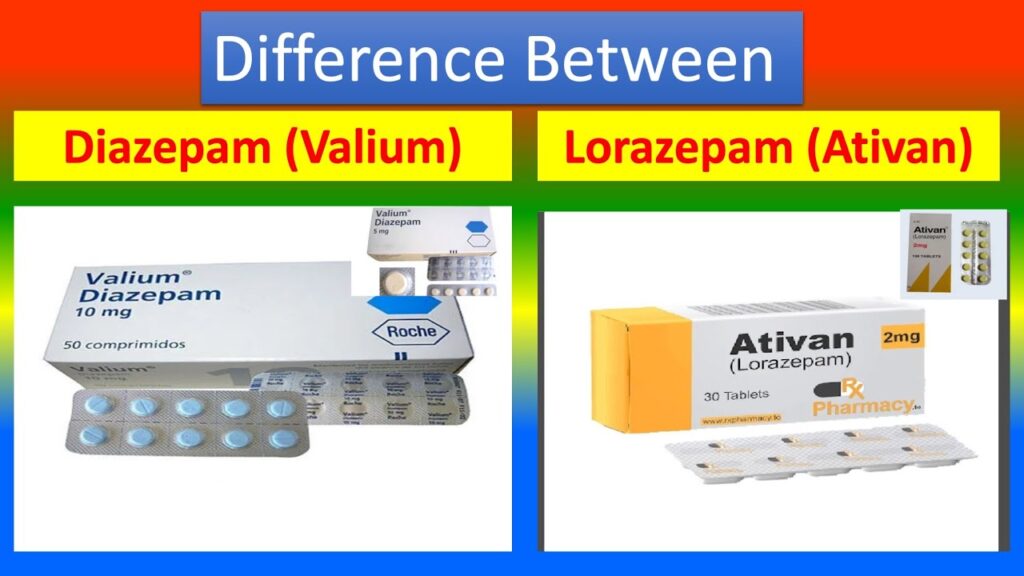When it comes to managing anxiety, two well-known medications often come into the conversation: Ativan (lorazepam) and Valium (diazepam). Both belong to the benzodiazepine class of drugs, which are known for their calming effects on the nervous system.
Despite their similarities, they have distinct differences in terms of their onset of action, duration of effects, potential side effects, and appropriate uses. Understanding these differences can help patients and healthcare providers make more informed decisions about which medication might be best for a particular situation.

1. Onset and Duration of Action
One of the most significant differences between Ativan and Valium is their onset and duration of action. Ativan has a relatively quick onset, typically within 15 to 30 minutes, making it a good option for acute anxiety episodes or panic attacks. It has an intermediate half-life, ranging from 10 to 20 hours, which means its effects can last throughout the day but won’t linger excessively.
Valium, on the other hand, has a longer onset of action, generally taking effect within 30 to 60 minutes. However, its duration is considerably longer due to its extended half-life, which can range from 20 to 70 hours. This makes Valium a better choice for conditions that require prolonged anxiety management, such as generalized anxiety disorder or for use in tapering off benzodiazepines.
2. Potency and Dosage
Ativan is considered more potent on a milligram-to-milligram basis than Valium. This means that smaller doses of Ativan can produce similar effects to larger doses of Valium. For example, 1 mg of Ativan is roughly equivalent to 5 mg of Valium in terms of anxiety relief. The higher potency of Ativan allows for smaller doses, which can reduce the risk of certain side effects.
3. Side Effects and Risks
Both Ativan and Valium share common side effects typical of benzodiazepines, including drowsiness, dizziness, and potential cognitive impairment. However, due to its longer half-life, Valium is more likely to cause prolonged sedation and has a higher risk of accumulation in the body with repeated dosing, leading to increased side effects over time.
Ativan, with its shorter half-life, is less likely to cause prolonged sedation, but it can lead to more pronounced withdrawal symptoms if discontinued abruptly, especially after long-term use. Both medications have the potential for dependence, so they should be used cautiously and only under the supervision of a healthcare provider.
4. Appropriate Uses
Ativan is often preferred for short-term management of anxiety, particularly when quick relief is needed, such as in acute anxiety attacks or preoperative anxiety. Its shorter duration of action makes it less likely to interfere with daily activities.
Valium’s longer duration of action makes it useful for long-term anxiety management, muscle spasms, alcohol withdrawal symptoms, and as an adjunct in certain seizure disorders. It is also frequently used in tapering programs for individuals discontinuing benzodiazepine therapy due to its prolonged effect and smoother tapering process.
Conclusion
Both Ativan and Valium are effective medications for anxiety relief, but their differences make them suitable for different scenarios. Ativan’s quick onset and shorter duration make it ideal for acute anxiety, while Valium’s longer duration is beneficial for ongoing anxiety management or tapering off benzodiazepines.
The choice between these medications should be guided by a healthcare provider, considering the specific needs and medical history of the patient. By understanding the unique characteristics of each drug, patients can better navigate their treatment options and achieve optimal anxiety management.